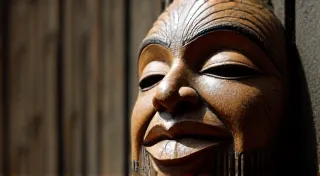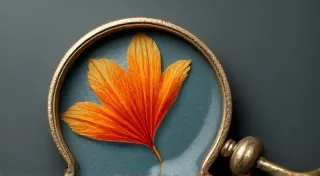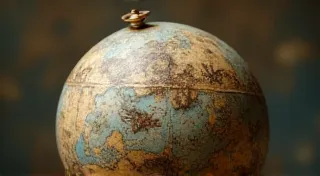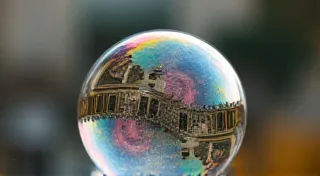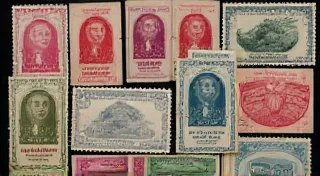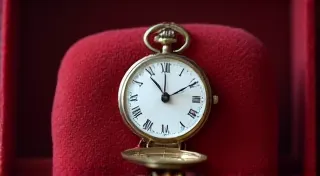The Postcard’s Silent Witnesses: Documenting Disasters and Defining Moments
The scent of aged paper, the subtle texture of linen or cardstock beneath your fingertips – holding a vintage postcard is more than just possessing a piece of paper; it's holding a whisper from the past. For postcard collecting enthusiasts, these aren’t mere souvenirs; they are portals to vanished eras, offering fleeting glimpses into the lives and experiences of people long gone. And within that collection, a particularly poignant and powerful category exists: postcards depicting moments of upheaval, disaster, and defining historical events. They serve as silent witnesses, offering perspectives often overlooked or sanitized in official records.
My own fascination with these "disaster postcards," as they're sometimes called, began with a single image. It was a real photo postcard, sepia-toned and slightly faded, depicting the aftermath of the Great Galveston Hurricane of 1900. The scene wasn’t one of heroic rescue or valiant rebuilding; it was of devastation. Partially submerged houses leaned at impossible angles, debris choked the streets, and the faces of the onlookers, blurred by the grainy photograph, were etched with a profound sadness that transcended the decades. Suddenly, history wasn't just dates and battles; it was this palpable sense of loss, captured on a small, seemingly insignificant piece of cardboard.
The Rise of the Disaster Postcard
The late 19th and early 20th centuries witnessed a perfect storm of factors that spurred the production and circulation of disaster postcards. The advent of the halftome printing process made mass production relatively inexpensive. The burgeoning postal system meant easy and affordable distribution. And the rise of tourism created a demand for unique and often sensational images. When tragedy struck – a devastating flood, a raging fire, a catastrophic earthquake – opportunistic publishers weren't slow to capitalize. They would dispatch photographers to the scene, capturing the destruction and quickly producing postcards to be sold to a public hungry for news and a morbid curiosity.
While these postcards were undoubtedly driven by commercial interest, their value lies in their unvarnished portrayal of events. Unlike newspaper accounts, which often attempted to frame narratives with a particular political or social agenda, these postcards presented a raw, immediate visual record. They showed the mud, the wreckage, the faces of ordinary people grappling with extraordinary circumstances. The way these images were crafted and distributed speaks volumes about the evolving world of visual communication – a fascinating subject explored in greater detail when considering the cartophilic muse and the artistic license taken in depicting these events.
The craftsmanship of these early postcards is also worthy of note. Many were real photo postcards (RPPCs), meaning they were photographs taken and developed by the publisher. This often resulted in remarkable detail and a sense of authenticity. The printers, too, were skilled artisans, utilizing techniques to highlight the drama and intensity of the scenes. Consider the stark contrast of light and shadow used to depict a burning building, or the way a photographer might frame a scene to emphasize the scale of the devastation. These were conscious artistic choices, albeit often driven by commercial objectives.
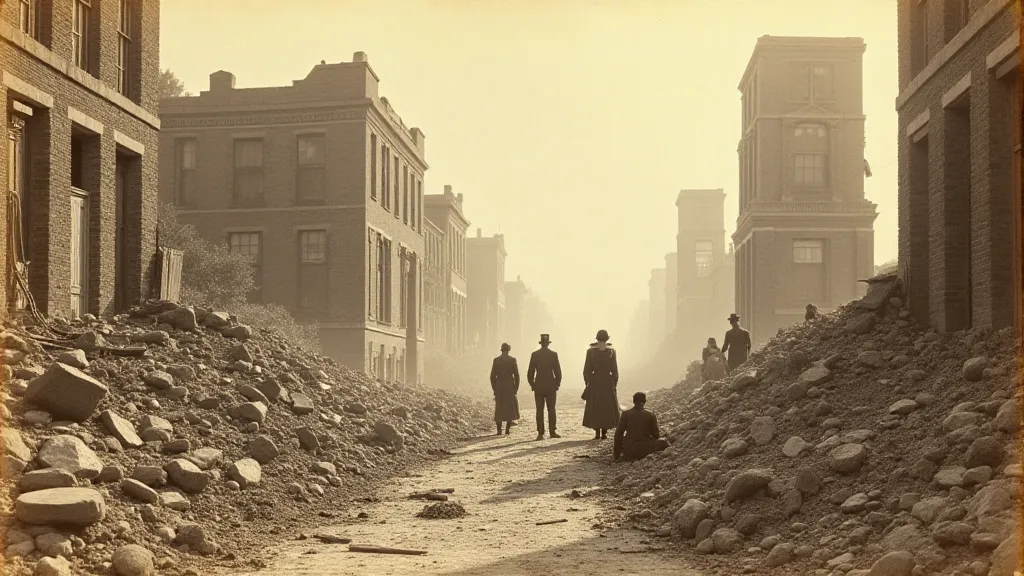
Beyond the Spectacle: Human Stories
It’s easy to become desensitized to the sheer volume of disaster postcards that exist. The San Francisco Earthquake of 1906, the Johnstown Flood of 1889, the Halifax Explosion of 1917 – each event spawned countless postcards, many depicting scenes of unimaginable loss. But to truly appreciate their value, it’s crucial to look beyond the spectacle and focus on the human stories they tell.
Examine the faces in the photographs. Do you see fear? Grief? Determination? The clothes they wear, the way they stand, the objects they hold – all provide clues about their lives and experiences. Often, the backs of these postcards contained messages from those who witnessed the events, hastily scribbled notes offering brief, poignant commentary. These short snippets of verse and prose etched on the backs of these cards – often filled with a blend of sorrow and hope – are a unique form of expression explored further in discussions about when postcards became portable memories.
One postcard I own, depicting the aftermath of the Ohio River Flood of 1937, bears a handwritten message: "Lost everything, but we're alive. God bless." That simple sentence encapsulates the resilience of the human spirit in the face of unimaginable adversity. It transforms the postcard from a mere image of destruction into a testament to hope and perseverance.
It’s important to acknowledge, however, the ethical considerations surrounding the collecting of these cards. They document real tragedies and represent profound suffering. Collectors have a responsibility to approach this niche of postcard collecting with sensitivity and respect for those who were affected by these events. Treating these cards as historical documents rather than mere collectibles is paramount. Understanding how fragments of personal narratives – like this one – become part of a larger narrative is also a fascinating journey into how history is pieced together, a process discussed further in the exploration of postcard alchemy: transforming fragments into a cohesive narrative.
Preservation and Collecting Insights
The preservation of these historical artifacts is crucial. Direct sunlight, humidity, and improper handling can all contribute to their deterioration. Storing them in acid-free sleeves and albums is essential. Avoid handling them excessively, and if restoration is necessary, seek the expertise of a professional conservator. While minor cleaning can sometimes be done carefully with archival materials, attempting to aggressively repair damaged cards can often do more harm than good.
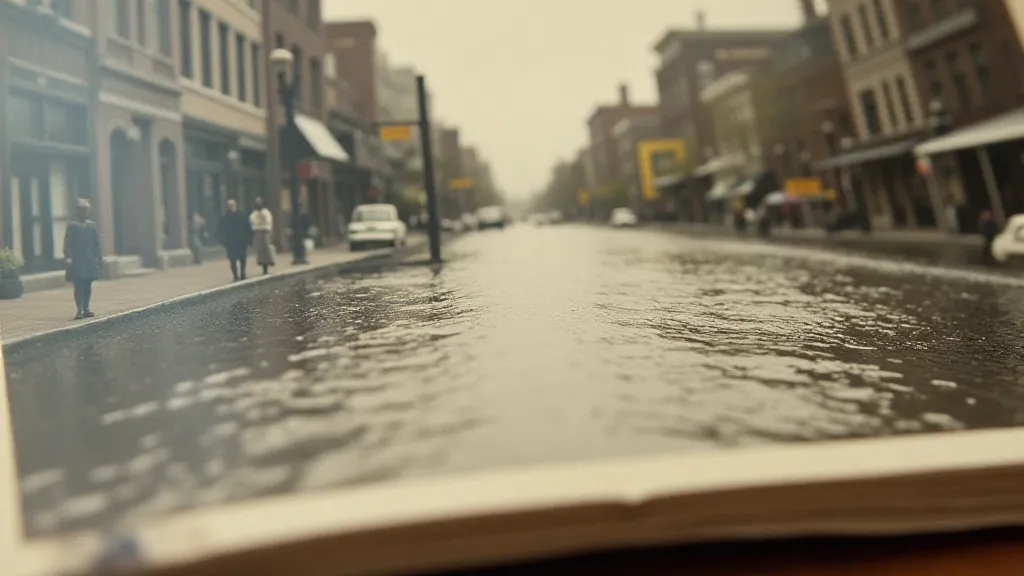
As a collector, you’re not just accumulating pieces of cardboard; you’re becoming a custodian of history. Research the events depicted on the cards. Learn about the people who lived through them. Share your knowledge with others. By doing so, you can ensure that these silent witnesses continue to speak to future generations. The collection process itself, and the stories that emerge as you assemble a themed group of cards, often reveals patterns and connections that shape our understanding of the past.
The value of these disaster postcards varies greatly, depending on factors such as rarity, condition, and the significance of the event depicted. However, for many collectors, the true value lies not in the monetary worth but in the profound connection to the past that these cards provide. They’re a tangible link to a world that is gone, a reminder of the fragility of life, and a testament to the enduring strength of the human spirit. Tracing families and communities through these collected images is a popular pursuit – a pursuit that mirrors how people construct their own histories and sense of belonging.
The collecting community can also provide invaluable insights and resources. Online forums and collector groups are excellent platforms for sharing knowledge, discussing acquisitions, and learning about the history behind these remarkable images.
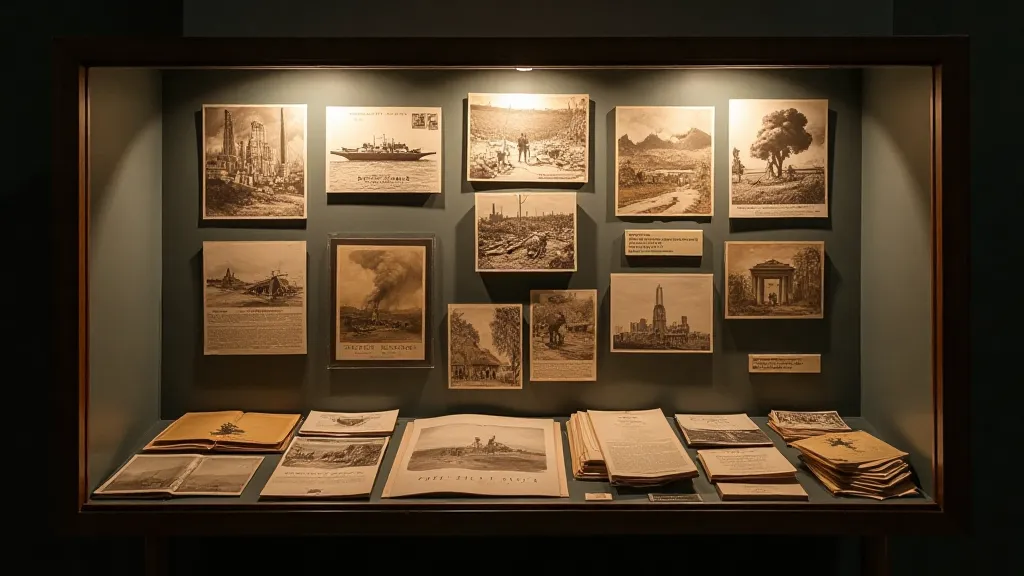
Ultimately, collecting vintage postcards – particularly those documenting moments of tragedy and upheaval – is about more than just acquiring objects; it’s about engaging with history, connecting with humanity, and preserving a vital record of the past. It’s about listening to the silent witnesses, and allowing them to tell their stories. The stories these postcards tell, and the passion that drives their collection, connect us to the human desire to understand, remember, and preserve the moments that define us.
The act of carefully arranging and displaying a collection, creating a visual narrative of loss and resilience, speaks to the human impulse to find meaning in chaos. The visual cues, the carefully chosen images, and the accompanying text – or even the silence of the backs – combine to create a powerful and moving experience. It’s a process that demands a deeper understanding, similar to the stories revealed when postcards became portable memories.
The way these images were crafted and distributed speaks volumes about the evolving world of visual communication – a fascinating subject explored in greater detail.
Ultimately, collecting vintage postcards—particularly those documenting moments of tragedy and upheaval—is about more than just acquiring objects; it’s about engaging with history, connecting with humanity, and preserving a vital record of the past. It’s about listening to the silent witnesses, and allowing them to tell their stories. The stories these postcards tell, and the passion that drives their collection, connect us to the human desire to understand, remember, and preserve the moments that define us.
The way these images were crafted and distributed speaks volumes about the evolving world of visual communication – a fascinating subject explored in greater detail.
Ultimately, collecting vintage postcards—particularly those documenting moments of tragedy and upheaval—is about more than just acquiring objects; it’s about engaging with history, connecting with humanity, and preserving a vital record of the past. It’s about listening to the silent witnesses, and allowing them to tell their stories. The stories these postcards tell, and the passion that drives their collection, connect us to the human desire to understand, remember, and preserve the moments that define us.
